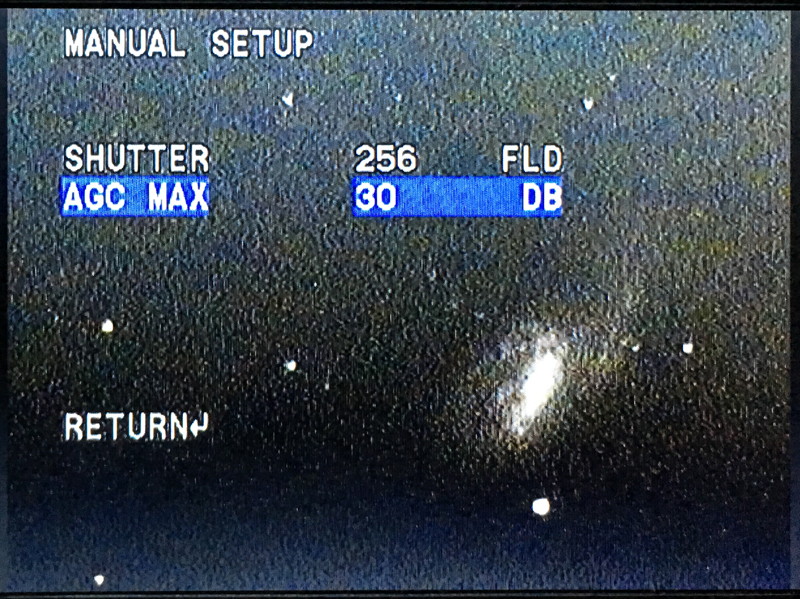Crescent Venus, Revolution Imager on 12" Telescope
Posted: 20 March 2017
Clouds returned on Friday, 17 March 2017.
Saturday, 18 March, dawned mostly clear. I spent several hours at Oracle State Park, our local IDA "International Dark Sky Park". I conducted my "Beginner Digital Astrophotography Workshop" during the afternoon:

I have uploaded the slides from the Workshop; see the Links page. Following my Workshop there was live music at the Park and then a star party during the clear night. You can read my report on the Oracle Dark Skies Committee web site.
|
Open: Sunday, 19 March 2017, 1715 MST Temperature: 101°F |
Session: 1088 Conditions: Mostly clear |
Equipment Used:
12" f/8 LX600 w/StarLock
2" 24mm UWA eyepiece
1.25" 9mm eyepiece
Camera:
D7200 DSLR
Revolution Imager
Upon opening the observatory I SYNCed the observatory clock to WWV.
1722 MST: LX600 ON, StarLock OFF, High Precision OFF.
1725 MST: viewed the planet Venus, 102X. The thin crescent was nicely visible.
Began setting up to image Venus using eyepiece projection at 271X with the D7200 DSLR. This is a stack of 468 HD video frames, 1/800sec, ISO 1600:

Next, I set up the Revolution Imager to view the planet Venus. 1755 MST: Revolution Imager ON. 1807 MST: after lots of work with the focus and exposure I finally got an image of Venus, as seen on this iPhone photo of the Revolution Imager display:

1810 MST: Revolution Imager OFF.
1825 MST: viewed Venus using the Vortex 12x50 binoculars. That was a nice sight with the crescent phase easily seen.
1837 MST: sunset.
1839 MST: viewed Venus in the 12" telescope, 102X. The planet was getting low in the western sky.
1840 MST: Venus was finally visible to the naked eye.
1846 MST: last look at Venus, 102X. It was now into tree.
Then slewed to the star Regulus and attached the Revolution Imager + its included focal reducer for later viewing of some galaxies. 1852 MST: Revolution Imager ON. Focused on Regulus. This is how the Imager looked attached to the 12" telescope:

1855 MST: Revolution Imager OFF. Began waiting for the sky to get darker. While waiting I prepared the D7200 DSLR for galaxy imaging.
1933 MST: Revolution Imager ON. Slewed to M65 (galaxy). This is how the galaxy appeared on the Imager display:

This is M66 (galaxy) on the display:

And NGC3628 (Sarah's Galaxy) on the Revolution Imager display:

1949 MST: Revolution Imager OFF. It was fun viewing some galaxies with the Imager.
I then attached the DSLR at prime focus + focal reducer, focused on the star Regulus using the Astrozap Bahtinov Mask, and locked the primary mirror.
2008 MST: slewed to M65 (galaxy). StarLock ON. Began a framing test image of M65. Unfortunately, seeing was very bad this night and StarLock autoguiding was very inaccurate. I tried several values of the RA guiding percentages but without significant improvement in tracking. I decided to give up galaxy imaging this night. 2017 MST: StarLock OFF. Removed the DSLR.
2025 MST: viewed the galaxies M65, M66, and NGC3628, all in the Leo Triplet of Galaxies, 102X.
2028 MST: LX600 OFF.
|
Close: Sunday, 19 March 2017, 2042 MST Temperature: 71°F |
Session Length: 3h 27m Conditions: Mostly clear, breezy, poor seeing |
Comments are welcome using Email. Twitter users can use the button below to tweet this report to your followers. Thanks.
Cassiopeia Observatory Home Page
Copyright ©2017 Michael L. Weasner / mweasner@me.com
URL = http://www.weasner.com/co/Reports/2017/03/20/index.html
